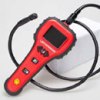With Father’s Day just around the corner, many of us are still probably thinking “I’m sure I’ll find the right thing in the next couple of days…”
Well, let us see if we can help you out there. Here’s the top five favorite things from our store as selected by the dads on our staff (in no particular order):
 1. High Volume Garden Hose – It’s great for watering the garden, washing the car, or squirting the kids. Fantastic all-around hose is drinking water safe and comes in different colors, including the most popular favorite color ever, blue.
1. High Volume Garden Hose – It’s great for watering the garden, washing the car, or squirting the kids. Fantastic all-around hose is drinking water safe and comes in different colors, including the most popular favorite color ever, blue.
 2. Hand Held Inspection Camera – Pretty much every guy here thinks this is just an awesome little gadget. While it’s designed for duct and pipe inspection, you could peer under the bed for monsters, look under the car without getting greasy, or just carry it around and look cool.
2. Hand Held Inspection Camera – Pretty much every guy here thinks this is just an awesome little gadget. While it’s designed for duct and pipe inspection, you could peer under the bed for monsters, look under the car without getting greasy, or just carry it around and look cool.
 3. Toilet Seats – Maybe it’s just us, but there’s an awful lot of toilet seat talk around here! Comparison of material, manufacturer, which seat is preferred, etc. It’s entirely possible your dad could use a new seat for the throne. And just think, every time he uses it, he’ll think of you…
3. Toilet Seats – Maybe it’s just us, but there’s an awful lot of toilet seat talk around here! Comparison of material, manufacturer, which seat is preferred, etc. It’s entirely possible your dad could use a new seat for the throne. And just think, every time he uses it, he’ll think of you…
 4. Shower Head – Again, it might be just us, but our dads on staff have been known to get into some pretty good debates when comparing shower heads. One can’t live without his Speakman Anystream, another feels the best stream actually comes from our super water-saving budget model, while yet another dad throws down in favor of handheld showers (of course he likes to bathe the dogs with his handshower).
4. Shower Head – Again, it might be just us, but our dads on staff have been known to get into some pretty good debates when comparing shower heads. One can’t live without his Speakman Anystream, another feels the best stream actually comes from our super water-saving budget model, while yet another dad throws down in favor of handheld showers (of course he likes to bathe the dogs with his handshower).
And last, but not least, believe it or not:
 5. PVC Fittings – They’re like Legos for adults! Well, more like Kinex or an erector set, but still, you can stick things together, build nifty stuff, and they’re made out of plastic. Who wouldn’t like them? After all, they come in all sorts of sizes and we’ve got configurations you can’t find at your local box store (side outlet 90s, by the way, make great corners for PVC frame tents. Just sayin’).
5. PVC Fittings – They’re like Legos for adults! Well, more like Kinex or an erector set, but still, you can stick things together, build nifty stuff, and they’re made out of plastic. Who wouldn’t like them? After all, they come in all sorts of sizes and we’ve got configurations you can’t find at your local box store (side outlet 90s, by the way, make great corners for PVC frame tents. Just sayin’).
Your turn: we’ve told you what our dads seem to think would make good presents. What about your dad?


